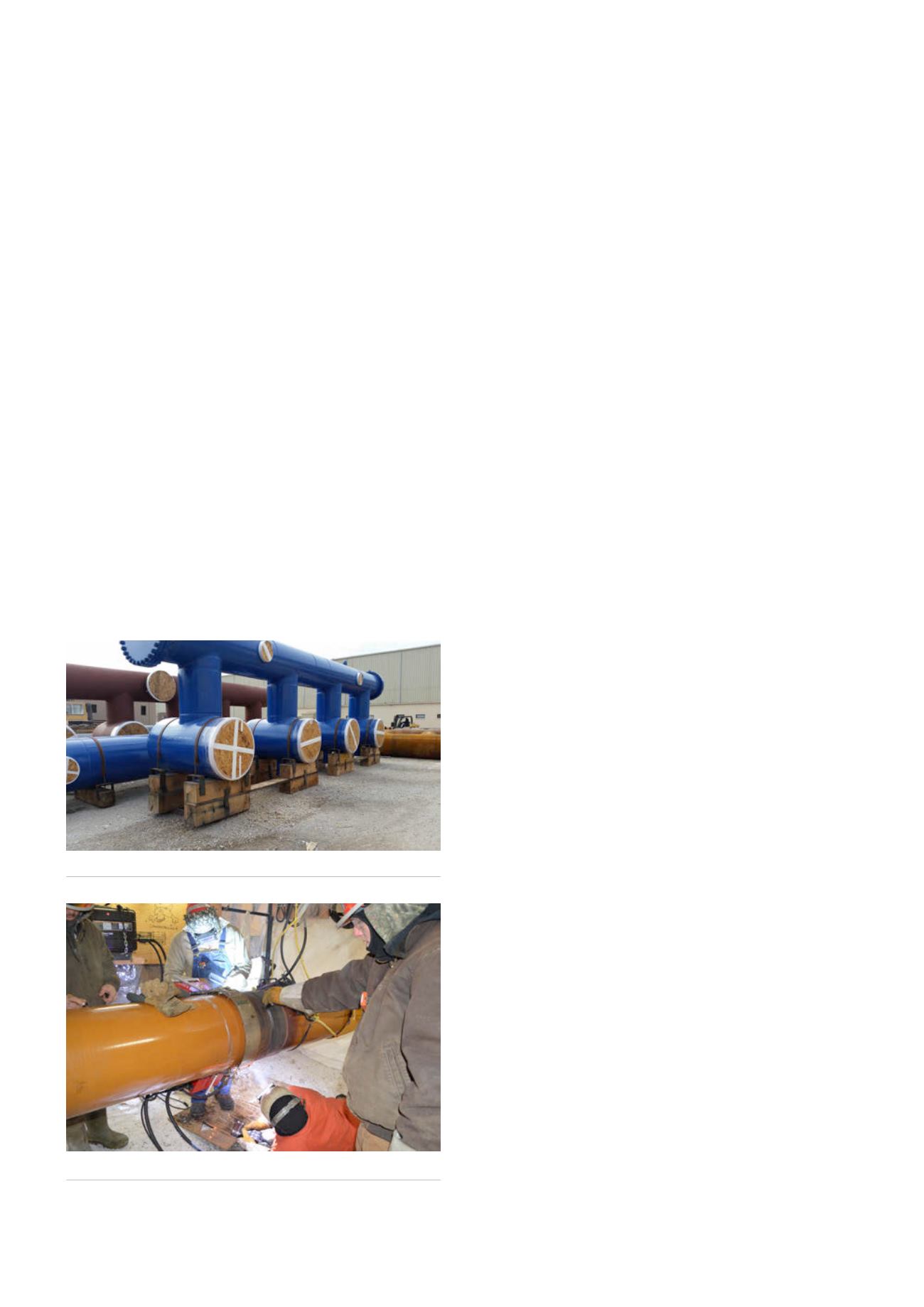
These kinds of innovations are critical pieces of the
puzzle because, in relationship to manually welding there
are welder fatigue factors to manage, inconsistencies from
welder to welder in the ability to maintain welding values
within the qualified procedures. In general terms, there is
repositioning and reduced mobility when welding by hand
so there are greater chances for error. The LoneStar system
provides advantages from reduced repair rates to increased
productivity leading to a savings in manpower, one of the
largest contributors to cost on any project.
Additional services offered by the company related to
the offshore industry include welding of steel catenary risers,
jumpers, PLETS, PLEMS, spool pieces, double jointing pipe
and spool base production.
The pipe welding industry is in high demand for
increased quality and consistency in welding. The majority of
the pipeline construction industry still utilises manual stick
electrode welding with downhill cellulosic electrodes. With
higher standards and specifications being mandated by the
oil and gas industries of today, it is a matter of time where
downhill cellulosic welding processes will become less and
less desirable.
Meeting current demands
The LoneStar system provides pipeline constructors and
pipe fabricators with several advantages over traditional
welding processes, such as increased consistency and weld
quality through verifiable repeatability; microprocessor
control of all welding parameters, reducing weld repairs and
labour costs; virtually eliminating the risk of human error in
equipment operation; reduced dependency on experienced
operators, eliminating interference with procedural welding
parameters. The LoneStar automated welding system also
has the capacity to collect and make available the actual
welding values used on each weld if so desired.
With increasing demand industry-wide for higher quality
at lower costs, having in-depth, specific, and highly detailed
production data has become extremely important for
companies. To this end, the LoneStar provides much needed
real-time information, enabling efficient management and
the assurance that the welding procedures are followed. As a
result, project managers can analyse raw production data in
an unbiased environment, unfiltered by welders on the line.
Additionally, user-defined access to production information
enables managers to conduct comparative analyses of quality
and throughput benchmarks, as well as maintain a tighter hold
on costs via inventory and machine utilisation assessments.
As most markets around the world have already switched
over to low hydrogen welding solutions, Canada and the
US are in the process of migrating away from cellulosic
consumables, and the LoneStar system is well positioned to
assist end users in making this transition.
Currently, the pipe welding workforce is ageing and
while new welding processes are being implemented and
demanded by the oil and gas companies, there is a skill level
and labour shortage in the marketplace. With the LoneStar,
clients can bridge the gap that allows the transition to
low hydrogen welding as well as provide a complete low
hydrogen welding solution for gas companies to consider
and adopt.
Dyna Torque has recently made inroads into the
Canadian market. With Canadian gas companies demanding
improved welding methods for both current and future
projects, Dyna Torque has implemented its LoneStar welding
system for uphill welding methods on spools, transition
pipes and mainline pipeline sections and processing plants.
The solutions offered by Dyna Torque meet or exceed the
country’s industry specifications.
Additional benefits are that repeatability and consistency
are maintained while reducing the possibility for repairs and
reducing man-hours to complete the scope of work on time
and on budget.
Adapting to different environments
Dyna Torque is currently providing automated welding
solutions for a Cenovus Energy project at Christina Lake in
the Province of Alberta. As a leading oilsands production site
in Alberta, Dyna Torque is part of this project by providing
quality welding services and technical support to one of the
largest construction sites currently in Alberta. Temperatures
down to -27˚F require special cables to be utilised in these
extremely cold temperatures.
Figure 5.
Slug Catcher Assembly.
Figure 6.
Line pipe welding Cenovus Project.
68
World Pipelines
/
JULY 2015


